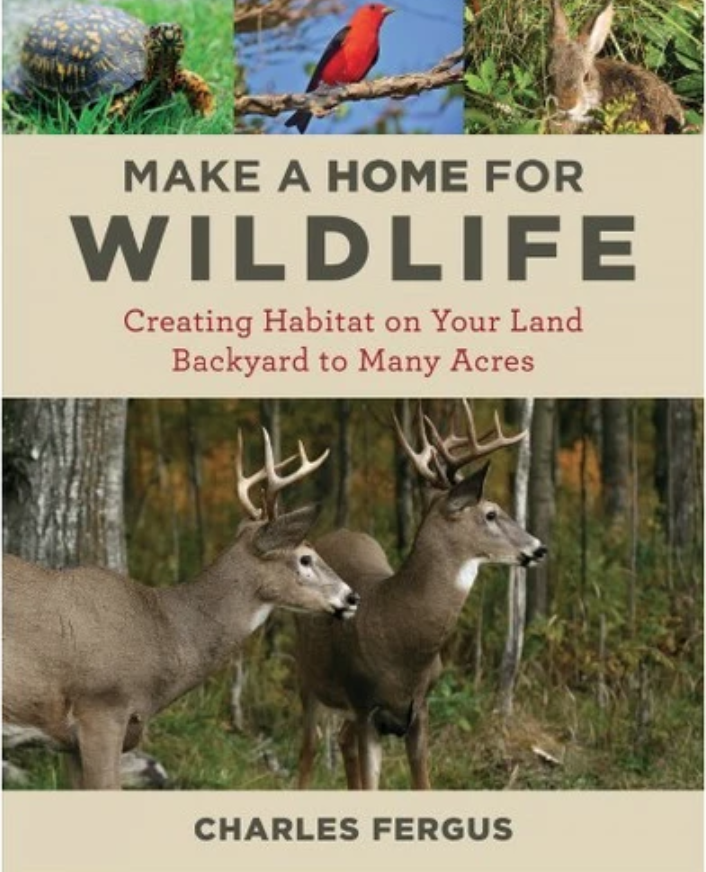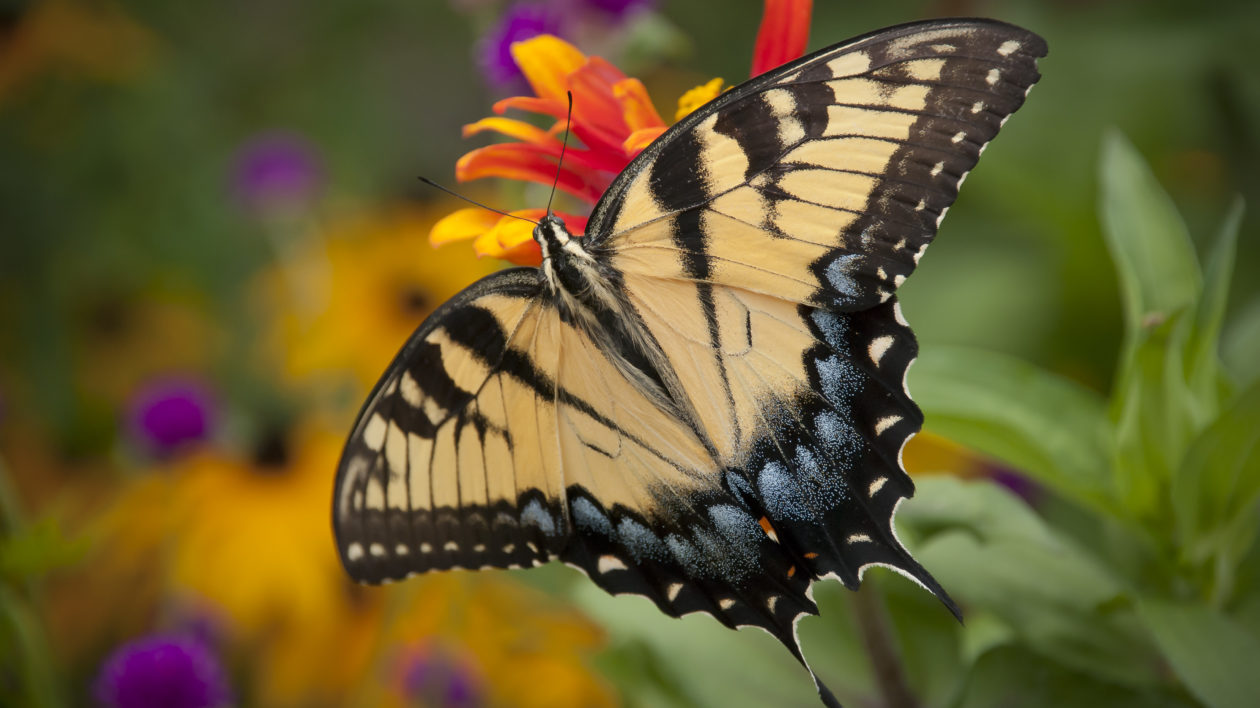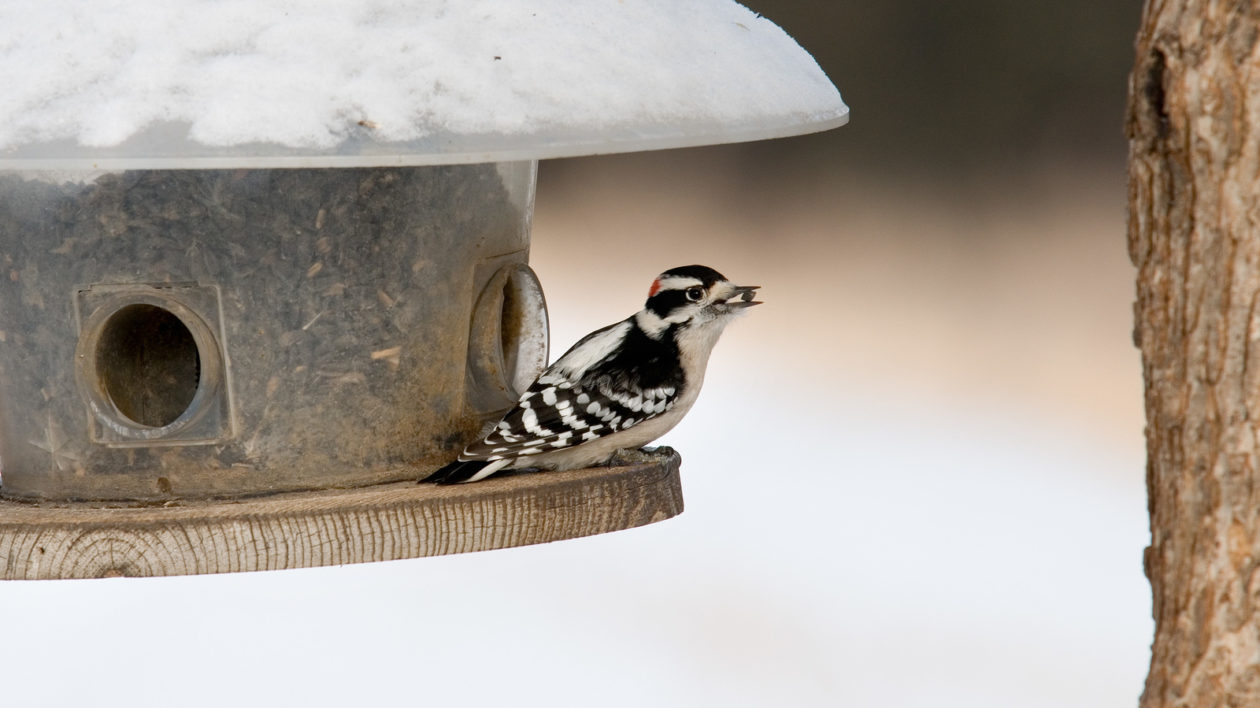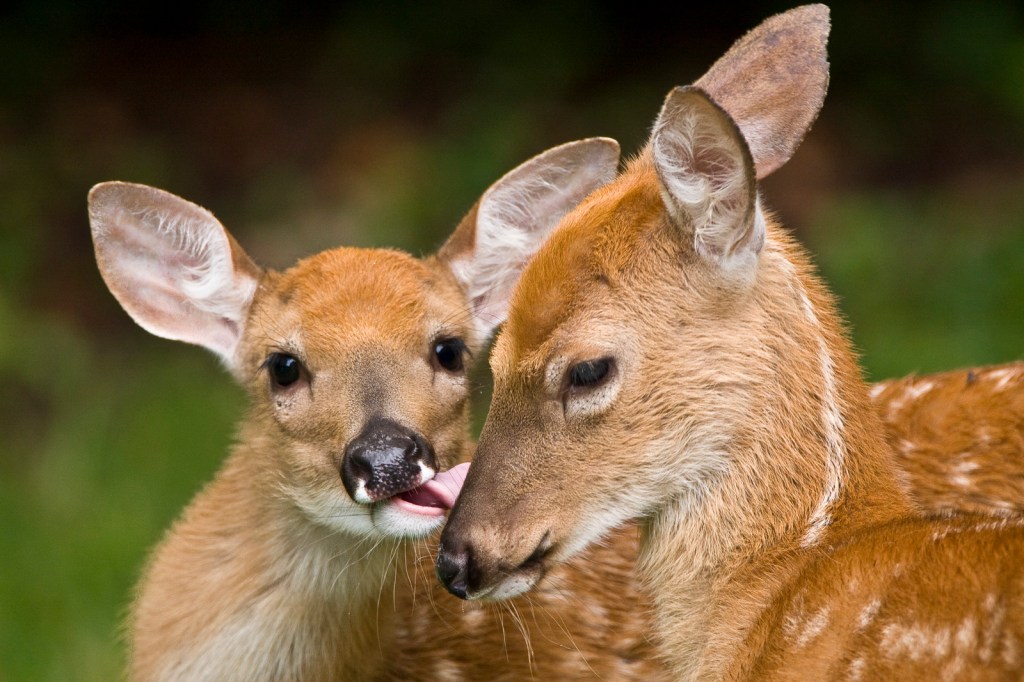When I give presentations, the most frequent question I receive is “What can I possibly do to help?” Unfortunately, I have found that people ask this question because they believe there is not much they can do to help.
Why? In no small, part the conservation/environmental community is very adept at pointing out the scope of the problems we’re facing. Given the global nature of climate change, habitat loss, invasive species and other issues, what can one individual possibly do? However, constantly emphasizing the world’s significant problems is not motivating. People feel as if the problems are so big that they can’t make a contribution.

I was heartened when I opened Charles Fergus’s new book and saw the first chapter was titled, simply, “You Can Make A Difference.” Make a Home for Wildlife: Creating Habitat on Your Land Backyard to Many Acres is a great primer for anyone looking to transform their property into better wildlife habitat.
Obviously not everyone owns property, but those who do have an opportunity to make real contributions to conservation. In my own front yard, I have seen firsthand the changes from switching from grass to native plants. It’s a perfect example of “build it and they will come.” When we moved in, the front yard was largely devoid of critters. Now there are Western fence lizards, native bees, butterflies, black-chinned hummingbirds and cedar waxwings.
But can little projects like this really do anything? Fergus points out that “more than half the forestland in the United States – some 441 million acres, most of it in the East – is owned and managed by 11 million private ownerships.” Private lands collectively offer one of the biggest opportunities in conservation, a fact recognized by The Nature Conservancy almost since its inception.

This book is focused on the eastern United States and has everything you need to understand different habitats, restoration, what to plant (and what not to plant), and how to attract specific types of wildlife. Many books focusing on backyard wildlife feature advice on bird feeding or bird-friendly planting. I appreciate this book’s approach to looking at the whole landscape. It explains ecological concepts and the scientific rationale for different management regimes.
It’s the kind of book that could help conservation managers explain options to landowners interested in restoration activities or easements. In fact, I’ve recommended to many of my colleagues that they keep a few copies in their trucks.
His information includes specific instructions for improving habitat for specific conservation goals, including helping imperiled species like the New England cottontail and improving habitat for pollinators and migratory birds. For many species, private land conservation offers the best (and, in some cases, only) hope for recovery.
I am sent a lot of books about improving and restoring habitat. Most of them contain useful information, but I’ll admit this: very few are enjoyable to read. They might make handy references, but they’re hardly books you’d sit with by the fire.
And that’s one of the things that sets Make a Home for Wildlife apart. Yes, it contains some of the most detailed, technical information you’ll find on wildlife habitat. Fergus has firsthand experience improving the habitat on his own property, and has written extensively on the topic for the Wildlife Management Institute and other entities.
But he is, foremost, a writer. I started reading Fergus’s natural history columns more than 30 years ago, and I’ve followed him through bird hunting tales, historical novels, travel books and more. He’s a storyteller and, even when he’s writing a how-to book, it’s infused with personal observations, clear text and keen observations.

The book is interspersed with landowner profiles, covering a wide range of property types. These offer interesting personal stories that show how individuals have made a difference (including landowners who have worked with the Conservancy).
I especially enjoyed the profiles of specific wildlife, usually based on personal observations and experiences. Readers who enjoy Cool Green Science’s backyard nature stories will enjoy Fergus’ poignant essays.
If you’re a private landowner in the eastern United States, this is a book you’ll refer to repeatedly, for both the practical advice and the nature writing.
And I’m happy to announce that Fergus has agreed to share tips and strategies for backyard wildlife habitat here on Cool Green Science. Hopefully, you’ll find inspiration to help out the local critters – and make a genuine difference in the world.




I believe I need to add this to my personal library! Thanks for highlighting it!
Thank you for introducing me to this book. I look forward to reading it. This winter we have seen a fox use our backyard ( jungle) for a resting way station, sleeping in the sun for two days at a time, then heading out again. We’ve also had a group of female deer spend a snowy day in the yard, and at other times, a single young male deer. I’m concerned about deer ticks, though.
“” Cool Green Science “” is just plain COOL!!! Always enjoy this read. Get some great ideas and wonderful knowledge when reading the articles. Over the past 40 years at my house, I have noticed changes in the wildlife, migration and environment. Some good. Some bad. Some ugly. Nonetheless, Mother Nature is resilient but needs some help. I am trying to transform my yard into a pollinator garden and preserve trees and flora. I will continue to do my small part to help our natural habitat. One note, I really enjoy the bees, butterflies and birds. The Hummingbirds are such a joy to watch!! Thanks again.
Now if you could only recommend something similar for the western part of North America.
I live in the West and am in a different category. By profession I am a Biology teacher and a land owner. Even though the plot of land I own is small, its still mine and I am determined to add as much natural habitat to it as possible. My lawn is long gone as well as fire loving juniper plants that are not native, in their place are as many native plants as I can find. Here is where the difficult part comes in, resources for native plants are not easily found as are the plants themselves. There are some sources but they often fall short in availability and in being affordable. Any suggestions would greatly be appreciated! Recently I joined the Lawn to Wildflowers movement sponsored by the University of Florida,Orlando. I am looking for native plants for my garden. For interested parties in the West it should be remembered that landscaping with large amounts of gravel, decorative rock are NOT fire resistant! Embers bounce off the” rockscaping” and the heat rising from the rocks add to the distance the ember travels. Native plants add not only cooler, greener landscaping but add flowers and habitat for the smaller wildlife. Now if I can just find a source or two….